Proustite (Ruby Silver)
Proustite is a sulfosalt mineral composed of silver, arsenic, and sulfur, with the chemical formula Ag₃AsS₃. Known for its striking deep red color and transparency, proustite often forms prismatic or rhombohedral crystals and can also appear as massive or granular aggregates. It is also referred to as “ruby silver” due to its vibrant hue and silver content. Proustite typically occurs in hydrothermal veins, often associated with other silver minerals such as galena and sphalerite, and can be found in notable mining districts around the world, including Germany, Chile, and Mexico.
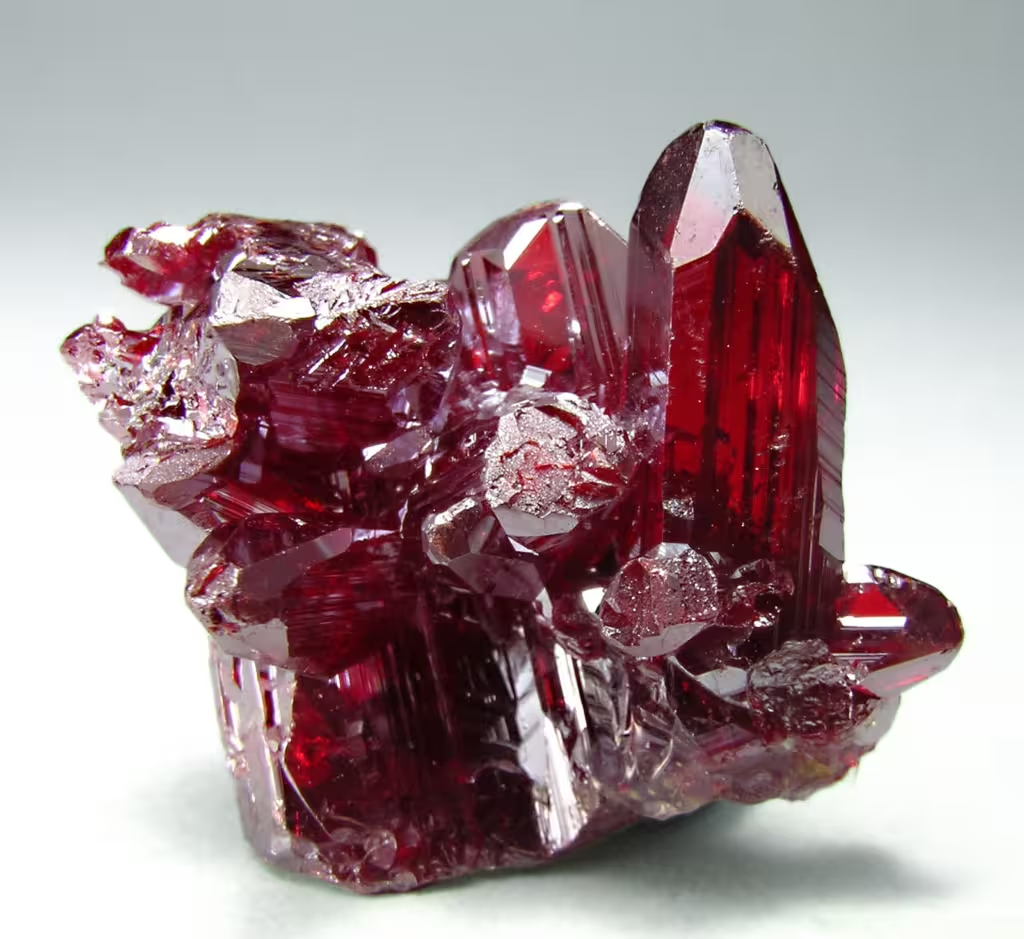
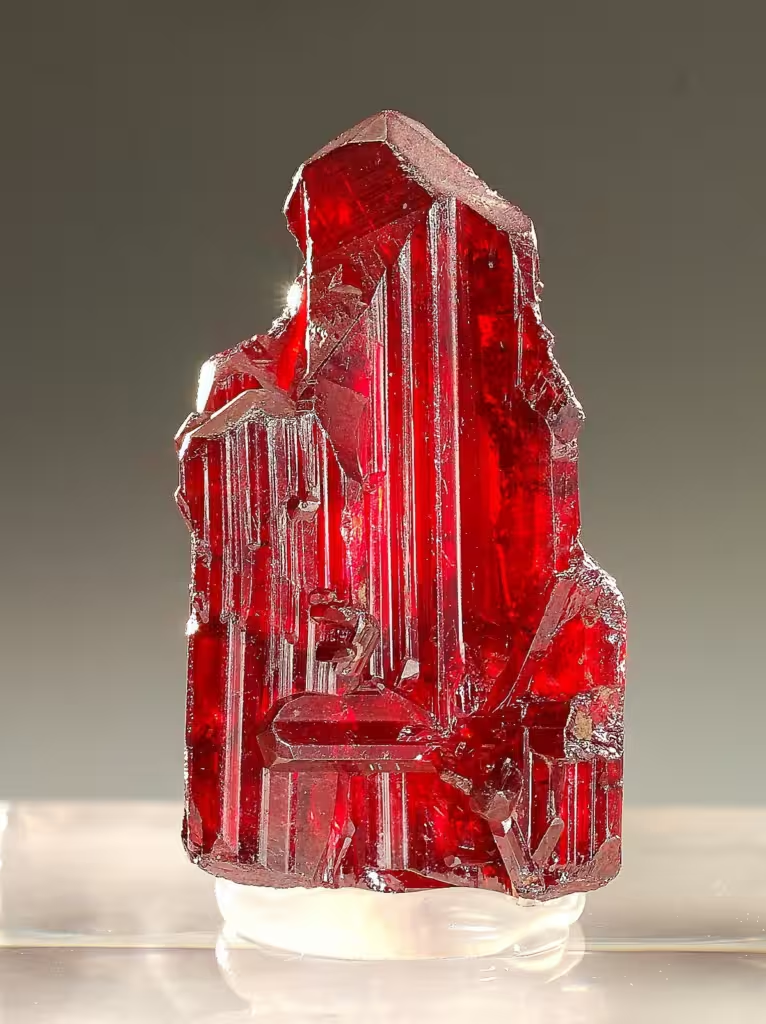
Proustita – Distrito Schneeberg, Erzgebirgskreis, Sajonia/Sachsen Alemania | Fabre Minerals
The importance of proustite lies primarily in its silver content, making it a valuable ore for silver extraction. Historically, it played a significant role in silver mining and contributed to the economic development of various mining regions. Beyond its economic value, proustite is of particular interest to mineral collectors and geologists due to its aesthetic appeal and crystallographic properties. Its unique color and crystal form make it a sought-after specimen for mineral enthusiasts and museums.
Applications of proustite extend beyond its value as an ore and a collector’s item. In the realm of scientific research, proustite has been studied for its semiconducting properties, which could have potential applications in photovoltaic cells and other electronic devices. Its ability to exhibit photoconductivity under light exposure is of interest for the development of optoelectronic technologies. Thus, proustite’s significance spans from its traditional role in mining to its potential in advanced scientific applications.
Mineralogical Characteristics
Proustite is characterized by several distinctive mineralogical properties that contribute to its identification and classification.
Chemical Composition
Proustite’s chemical formula is Ag₃AsS₃, indicating that it is composed of silver (Ag), arsenic (As), and sulfur (S). This composition places it within the sulfosalt mineral group.
Crystal System and Structure
Proustite crystallizes in the trigonal crystal system and often forms prismatic or rhombohedral crystals. The mineral’s internal structure features layers of silver and arsenic atoms alternating with sulfur atoms, which contributes to its distinctive physical properties.
Color and Transparency
One of the most striking characteristics of proustite is its deep red to scarlet color, which can vary depending on impurities and the presence of inclusions. When light interacts with proustite, it can exhibit a bright, ruby-like translucency, which is why it is sometimes called “ruby silver.”
Luster and Streak
Proustite has an adamantine to vitreous luster, giving it a shiny, glass-like appearance when viewed in reflected light. The mineral’s streak, the color of its powder when scratched on a porcelain plate, is typically scarlet-red.
Hardness and Specific Gravity
On the Mohs scale of hardness, proustite ranks between 1.5 and 2, indicating that it is relatively soft and can be scratched by a fingernail. Its specific gravity ranges from 5.57 to 5.64, which is relatively high and reflects its substantial silver content.
Cleavage and Fracture
Proustite exhibits good cleavage in one direction, meaning it can be split along specific planes to yield smooth surfaces. Its fracture is conchoidal, similar to broken glass, which means that it breaks along curved surfaces.
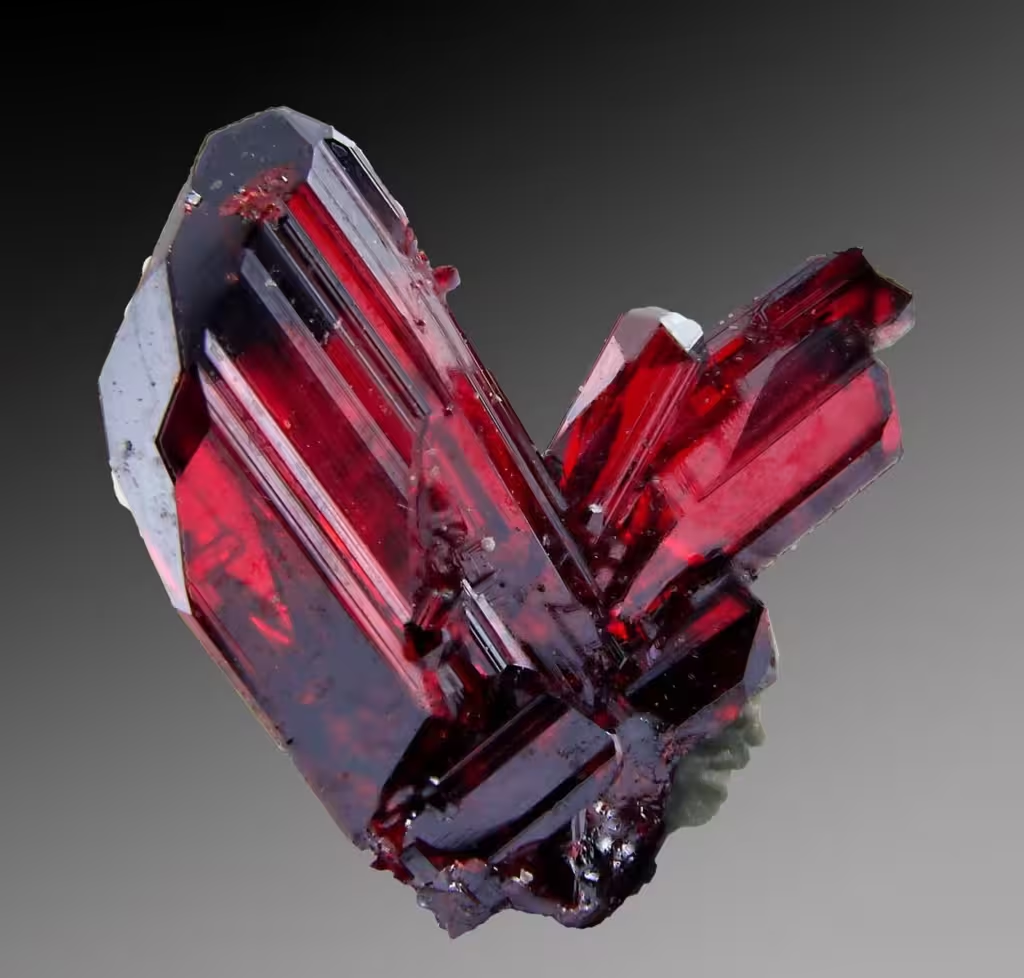
Optical Properties
In thin sections, proustite is transparent to translucent and exhibits birefringence, a difference in the velocity of light in different crystallographic directions, which can be observed under polarized light microscopy.
Occurrence and Associations
Proustite is typically found in hydrothermal veins, often associated with other silver-bearing minerals such as pyrargyrite, galena, sphalerite, and native silver. It forms in low-temperature hydrothermal environments and can be found in significant silver mining districts globally, including the Freiberg district in Germany, the Chañarcillo district in Chile, and various locations in Mexico and the United States.
These mineralogical characteristics make proustite not only a valuable ore for silver extraction but also a fascinating specimen for mineral collectors and a subject of scientific study in the field of mineralogy and materials science.
Occurrence and Formation
Proustite occurs predominantly in hydrothermal veins and is typically associated with other silver-bearing minerals. The formation and occurrence of proustite are influenced by specific geological and geochemical conditions.
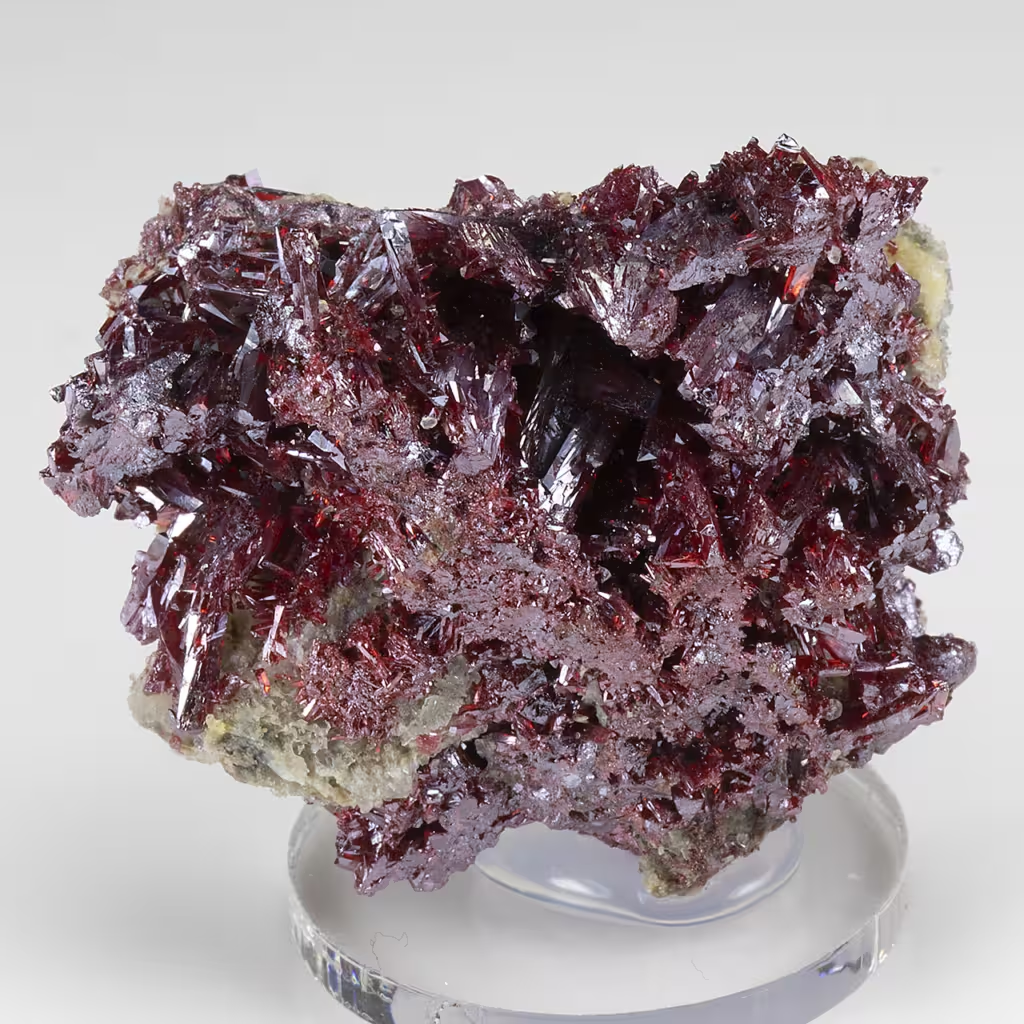
Proustite – Minerals For Sale (weinrichmineralsinc.com)
Geological Setting
Proustite is primarily found in low to moderate temperature hydrothermal vein deposits. These veins are formed from hot, mineral-rich fluids that move through fractures in the Earth’s crust. As these fluids cool and react with the surrounding rocks, minerals precipitate out of the solution, forming veins. Proustite is often found in veins that also contain other sulfosalts and sulfides.
Hydrothermal Veins
The hydrothermal veins where proustite forms are usually rich in silver and often contain a variety of other minerals. Commonly associated minerals include pyrargyrite (another silver sulfosalt), galena (lead sulfide), sphalerite (zinc sulfide), and native silver. The presence of these associated minerals can help identify potential locations for proustite.
Temperature and Pressure Conditions
Proustite forms under relatively low to moderate temperature conditions, typically between 100°C and 300°C. These conditions are common in the upper parts of hydrothermal systems, where the fluids are cooling as they ascend toward the surface. The pressure conditions are generally low, corresponding to the shallow depths at which these minerals are deposited.
Chemical Environment
The formation of proustite requires a specific chemical environment rich in silver (Ag), arsenic (As), and sulfur (S). The hydrothermal fluids must carry these elements in sufficient concentrations. The presence of arsenic is particularly crucial, as it combines with silver and sulfur to form the distinctive sulfosalt structure of proustite.
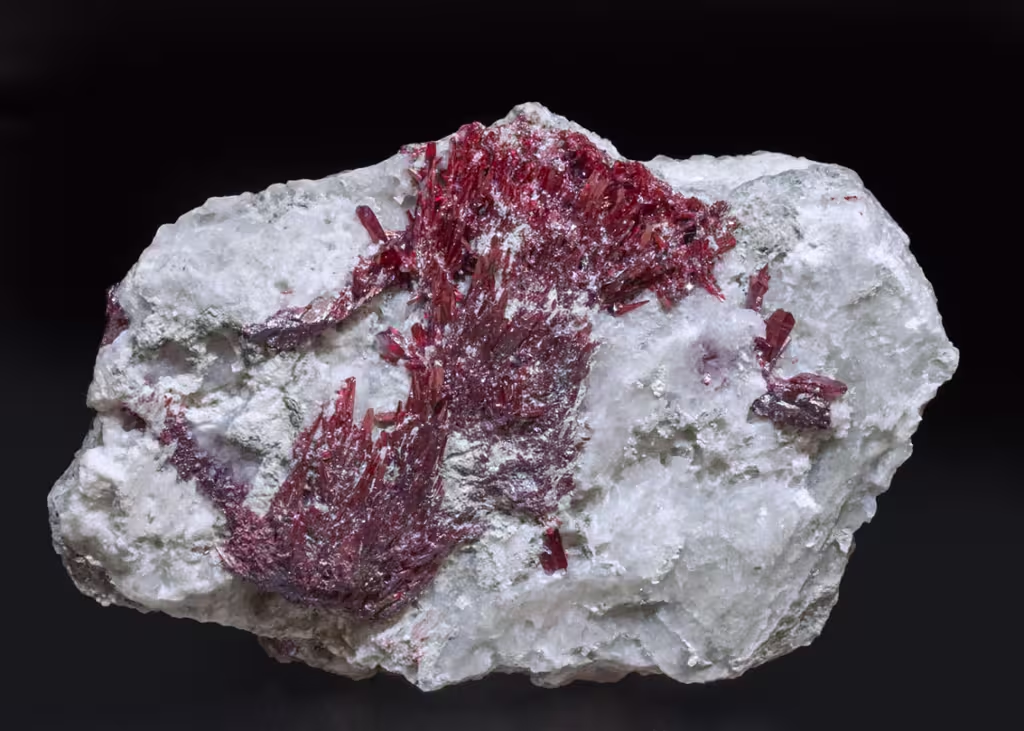
Proustita – Museo virtual de mineralogía (unizar.es)
Notable Occurrences
- Germany: The Freiberg district in Saxony is historically significant for its rich silver deposits, including proustite. The mineral was first described from this region, giving it its alternate name, “light ruby silver.”
- Chile: The Chañarcillo district is renowned for its silver mines, where proustite has been extensively mined. This area has produced some of the finest proustite specimens.
- Mexico: The Guanajuato and Zacatecas regions are well-known for their silver mining history, and proustite is a common mineral found in these deposits.
- USA: In the United States, notable occurrences include the Comstock Lode in Nevada and various locations in Colorado and Idaho, where proustite is found in association with other silver minerals.
Formation Process
- Source of Hydrothermal Fluids: Deep-seated magmatic or metamorphic processes generate hot, mineral-laden fluids.
- Ascent and Cooling: These fluids ascend through fractures in the Earth’s crust. As they rise, they cool, leading to the precipitation of minerals.
- Deposition in Veins: Silver, arsenic, and sulfur precipitate from the cooling fluids, forming proustite along with other minerals in the hydrothermal veins.
- Crystallization: Proustite crystallizes from these solutions, typically forming prismatic or rhombohedral crystals depending on the space and conditions available in the vein.
The occurrence and formation of proustite are thus tightly linked to specific hydrothermal processes and the presence of certain chemical elements, making it a fascinating subject of study in economic geology and mineralogy.
Economic Importance, Uses and Applications
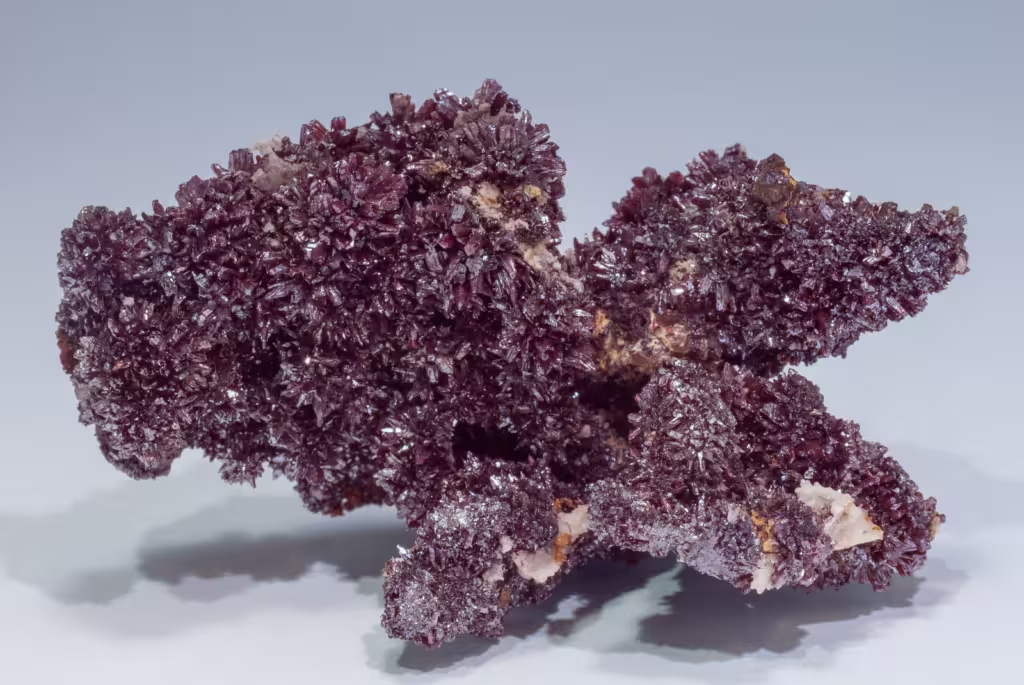
Proustite with Quartz – Imiter Mine, Jebel Saghro, Imiter District, Tinghir Province, Drâa-Tafilalet Region Morocco | Fabre Minerals
Economic Importance
Proustite is economically significant primarily due to its high silver content. Historically, it has played an essential role in silver mining, contributing to the wealth and development of numerous mining regions around the world. Although less common than other silver ores, proustite’s striking appearance and relatively high silver percentage make it a valuable mineral in the extraction of this precious metal.
Uses and Applications
1. Silver Extraction
The most prominent use of proustite is as an ore of silver. Silver extracted from proustite is used in various industries, including:
- Jewelry and Silverware: Silver is highly valued for its aesthetic qualities and is widely used in the creation of jewelry, tableware, and decorative items.
- Electronics: Due to its excellent electrical conductivity, silver is used in numerous electronic components, including conductors, switches, and contacts.
- Photography: Historically, silver compounds were essential in photographic films and papers. Though digital photography has largely replaced traditional methods, some niche applications still use silver-based materials.
- Medicine: Silver has antimicrobial properties and is used in wound dressings, coatings for medical devices, and certain medications.
2. Mineral Collecting
Proustite’s deep red color and well-formed crystals make it a prized specimen for mineral collectors. High-quality proustite crystals are sought after by enthusiasts and can command high prices in the market. Museums and educational institutions also collect and display proustite specimens for their educational and aesthetic value.
3. Scientific Research
Proustite has intriguing properties that make it of interest in scientific research:
- Semiconducting Properties: Proustite exhibits semiconducting characteristics, making it a subject of study for potential applications in electronics and photovoltaics. Its photoconductivity, where its electrical conductivity increases when exposed to light, is particularly noteworthy.
- Optoelectronics: Research into the photoconductive properties of proustite explores its potential use in optoelectronic devices, which convert electrical signals into photon signals and vice versa. This includes potential applications in solar cells, photodetectors, and other light-sensitive technologies.
4. Geological Studies
Geologists study proustite to understand the conditions under which hydrothermal veins form and evolve. Proustite serves as an indicator mineral, helping geologists locate other valuable minerals and understand the geothermal history of a region.
Summary
Proustite’s economic importance and applications are multifaceted. While its primary value lies in silver extraction, it also holds significant worth for collectors, researchers, and geologists. The combination of its striking appearance and unique properties ensures that proustite continues to be a mineral of interest across various fields.
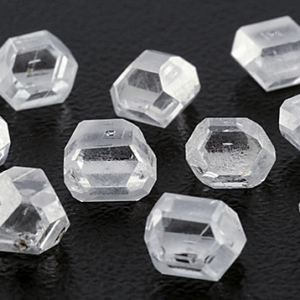
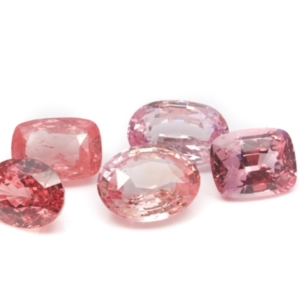
Leave a Reply
Want to join the discussion?Feel free to contribute!